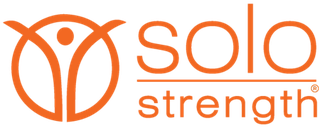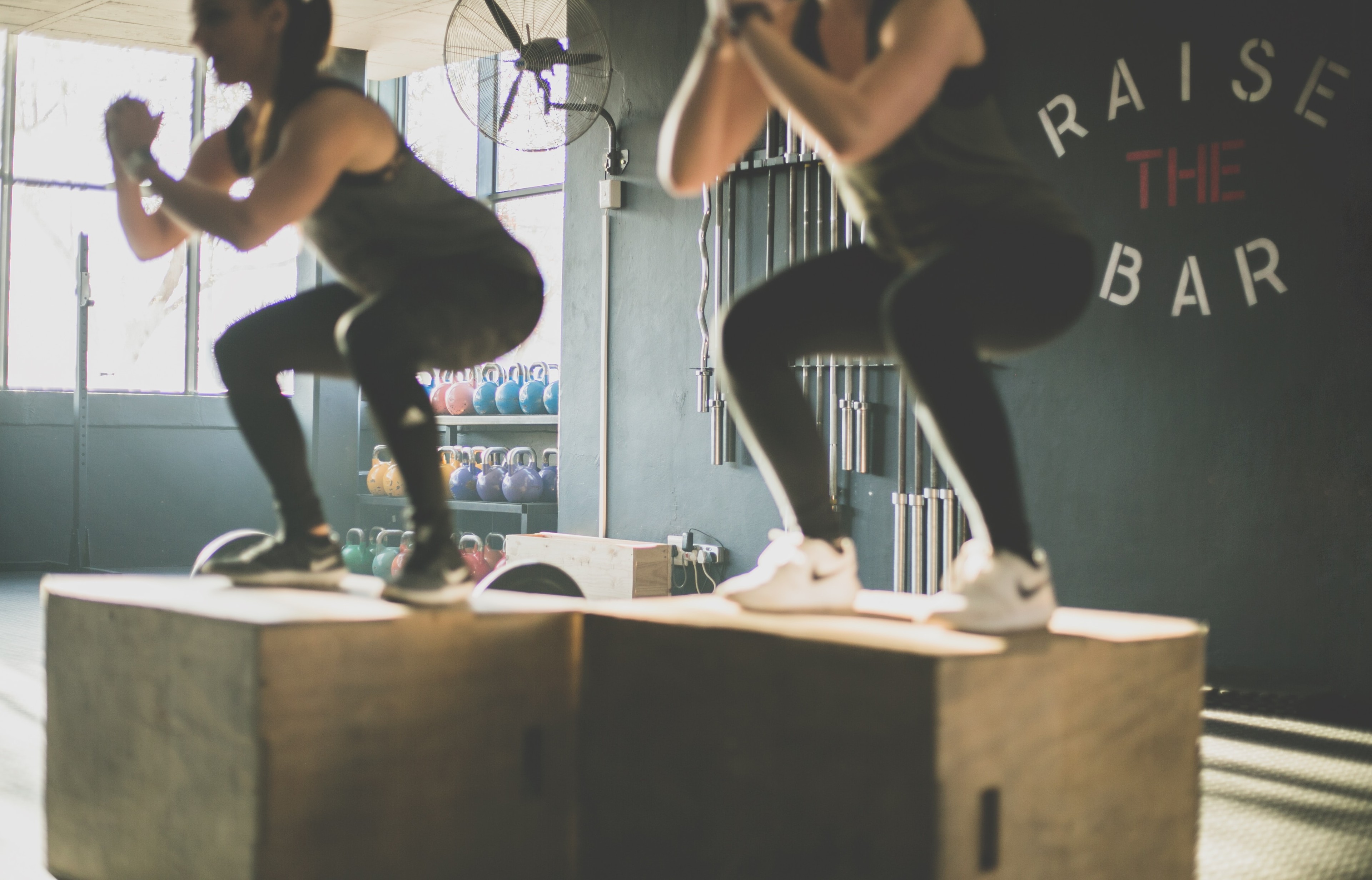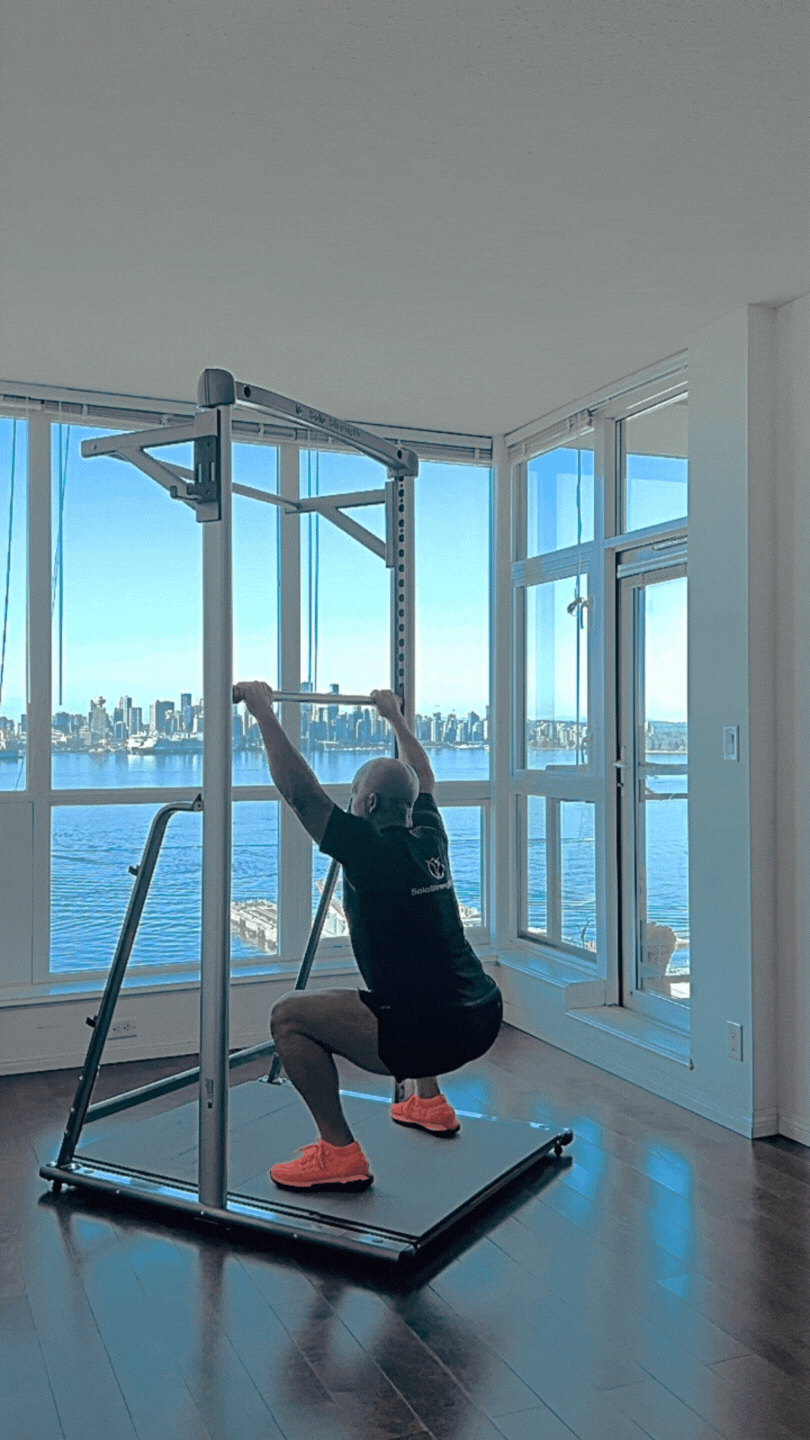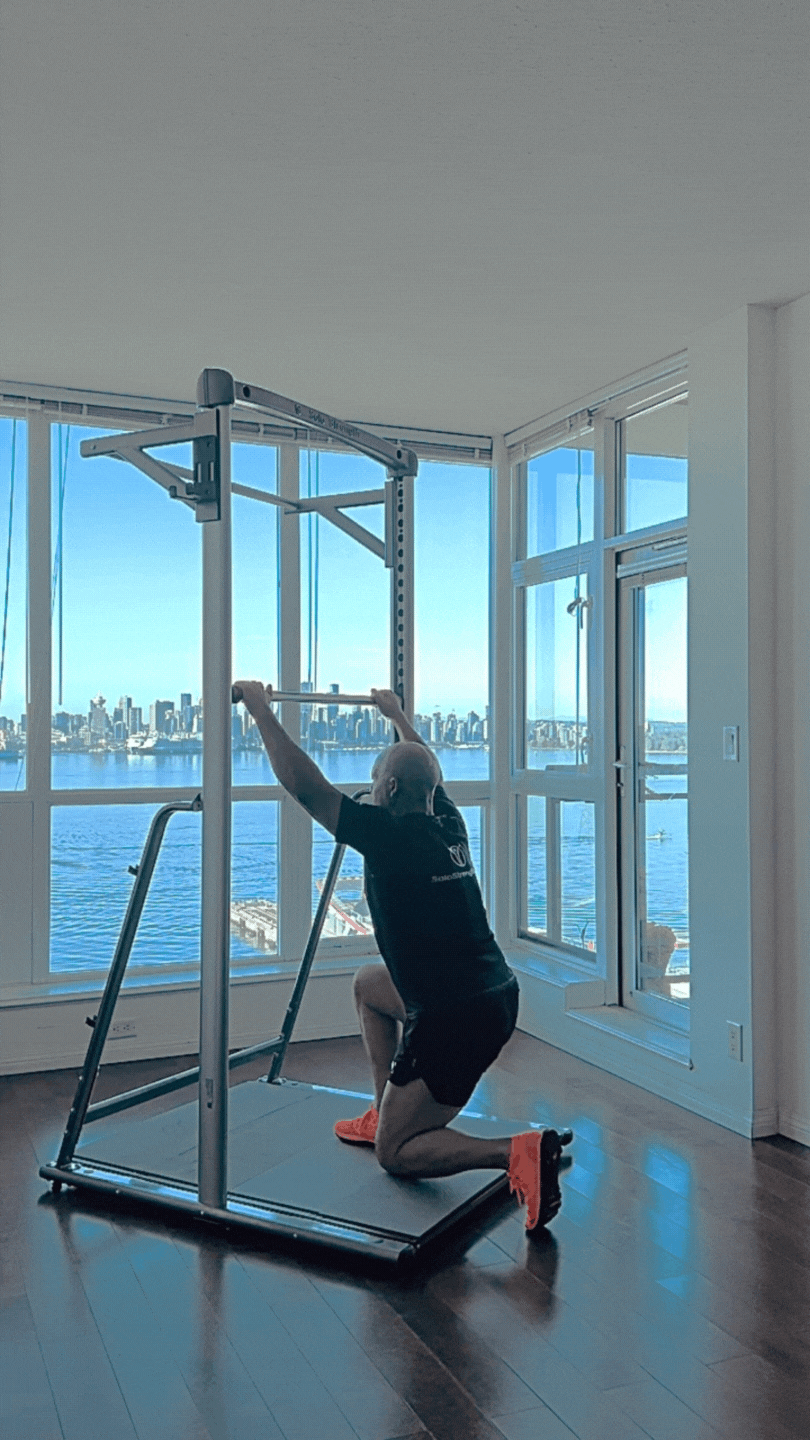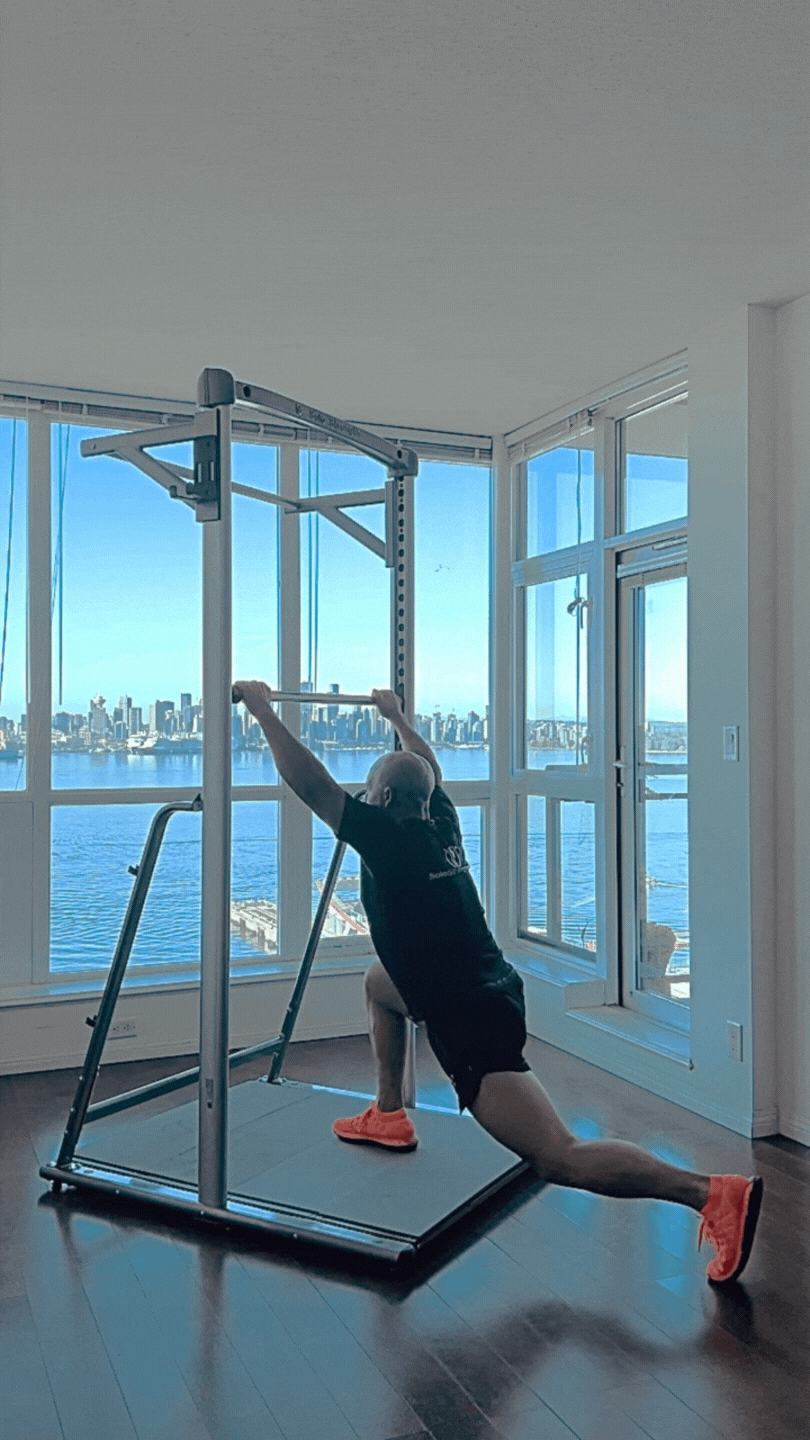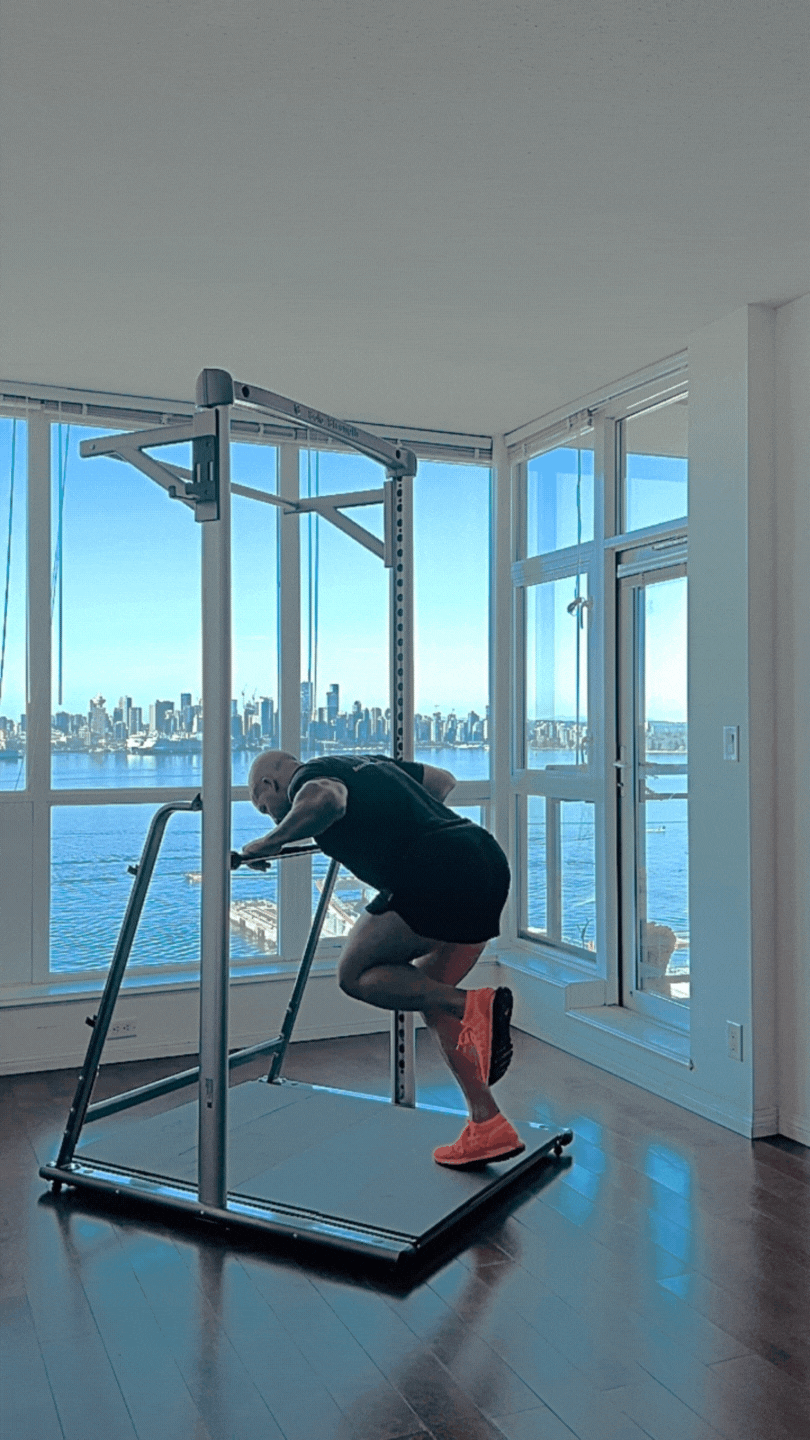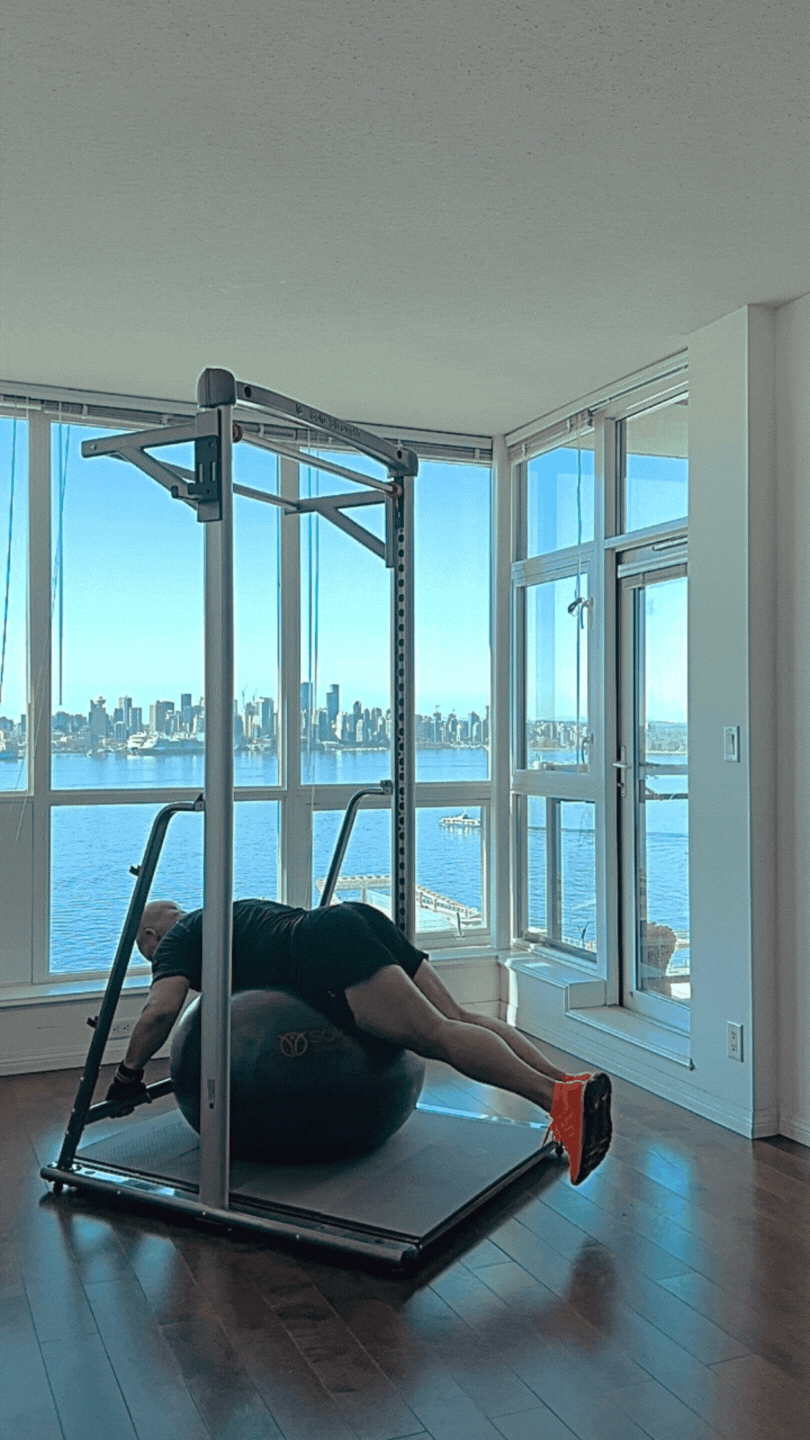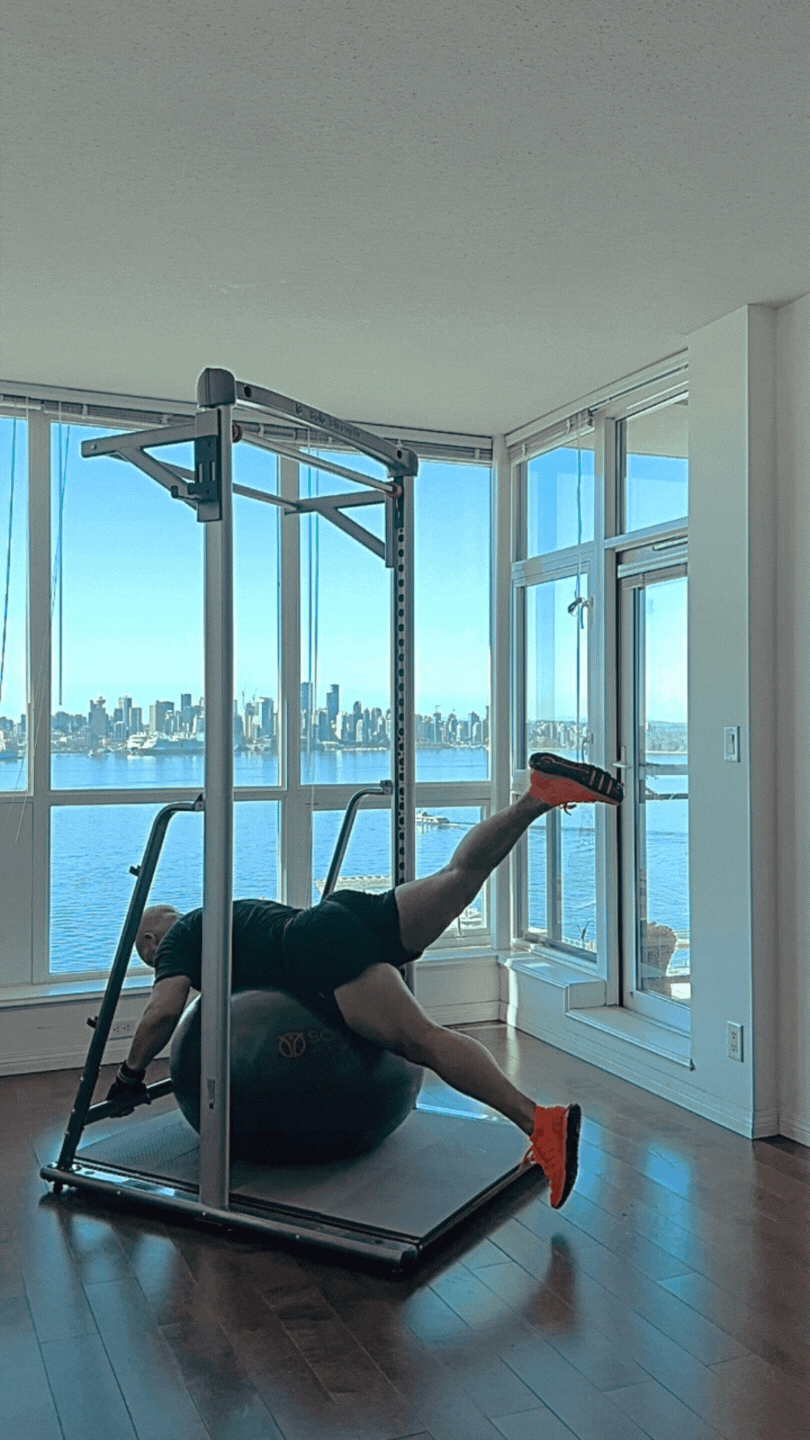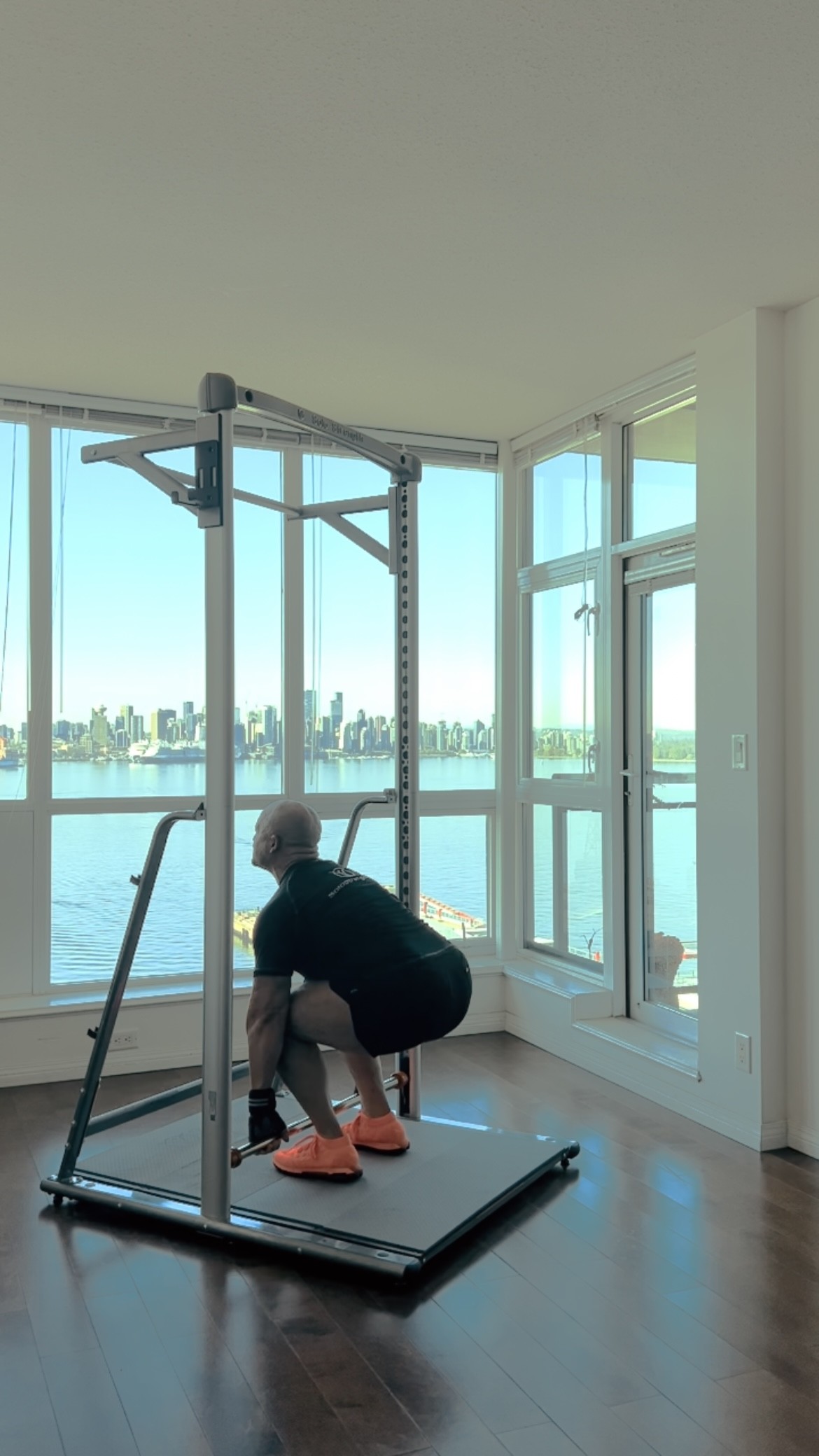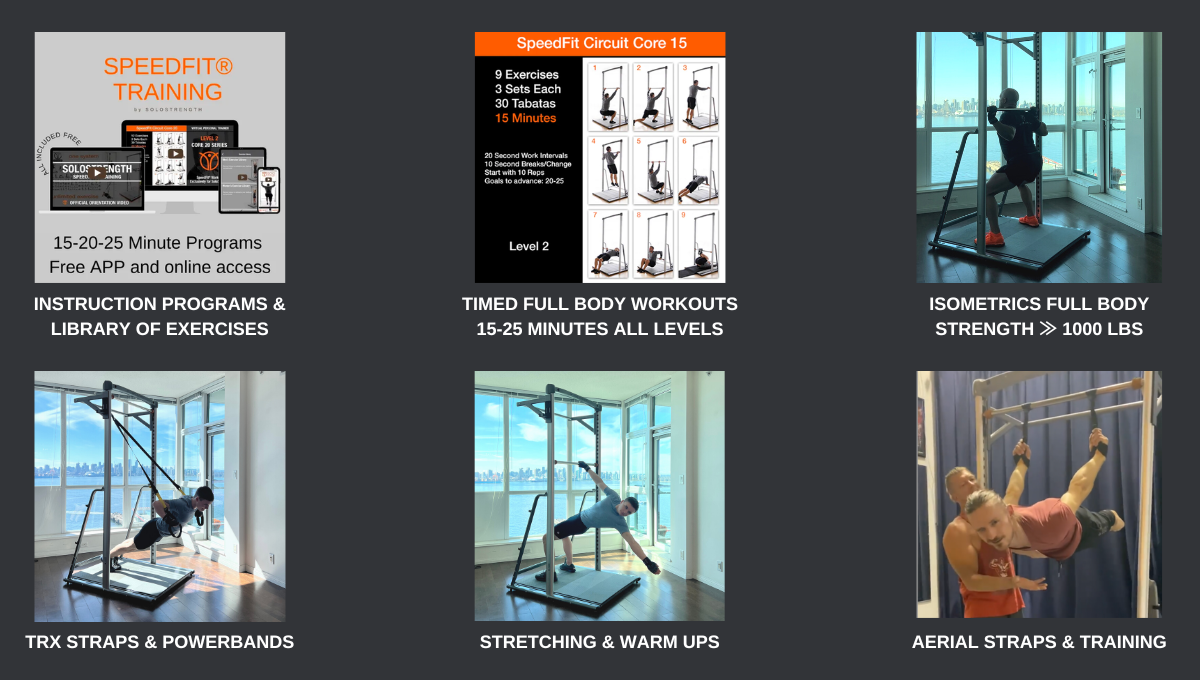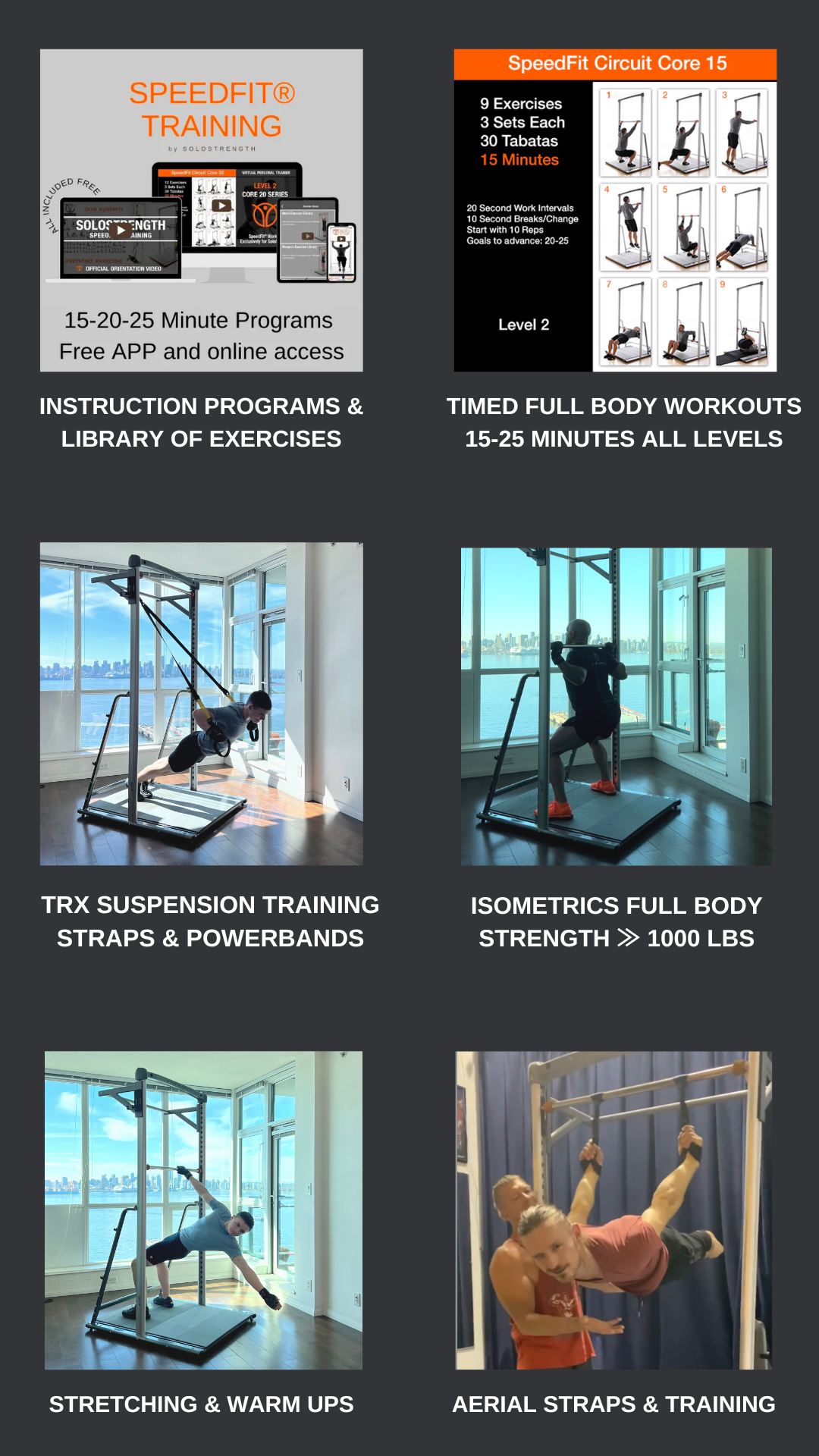Quad Calisthenics - The Best 8 Exercises To Do At Home
Part of the SoloStrength Body Weight Exercise Series
Introduction
If there was a body part that people love to talk about doing instead of actually doing, it’s legs. And it’s no wonder. They are the largest muscle group and the most psychologically demanding. Why? Because you always have more reps in reserve. And that’s where the growth lies.
Our goal at SoloStrength is to equip you with everything you need to succeed in building a lifestyle that promotes health and fitness. Whether it be workout equipment and accessories or giving you the advice and information you need. This article is dedicated to those that need help training their legs, with an emphasis on quads. If you incorporate these exercises into your routine, you will see growth and strength increase.
The quadriceps femoris make up the anterior, or front-facing, compartment of the thigh. They assist the body in extending the knee joint, allowing you to standup up, walk/run, and kick your feet. As the name suggests, it is made up of 4 muscles: the rectus femoris, vastus lateralis, vastus intermedius, and vastus medialis. They work in unison to ensure the knee extends straight. Often, a weakness in one can result in an unstable and injury-prone knee.
This muscle group has a huge capacity for growth when compared to others, and confers other benefits than just aesthetics. Here are just a few:
You'll train other muscles as well. The legs include the glutes, hamstrings, and quads, but you will also recruit your calves and feet to help you stabilize movements. You’ll engage the abs as well to maintain your posture and help with coordination. There are others but these are the most immediately noticeable.
You’ll burn more fat. Leg muscles are much larger, and burn more energy than others when engaged. Fat is often broken down to provide additional energy.
You’ll protect your joints. Each muscle of the quadriceps helps stabilize the knee. If they are balanced, you are less likely to get injured. The squat movement also helps strengthen joints and bones, further decreasing the likelihood of injury.
You’ll improve your strength in other exercises. Not only will your other exercises get stronger due to additional muscle recruitment during a squat, for example, but you will drastically accelerate your mind-muscle and mind-body connections. Because squatting takes more mental effort than other exercises, it makes the rest seem easy in comparison.
You’ll accelerate growth on your fitness journey. Putting effort into one exercise has carryover benefits to the rest, but few do as well as squats. The more you do it, the more you’ll end up in an upward spiral of progress.
-
You’ll improve your hormonal health and energy levels. The large mass of the leg muscles helps optimize your testosterone, growth hormone, and cortisol. There are so many benefits to this that we need to start a new list within this one:
Increased muscle mass and growth
Decreased body fat
Better blood sugar panels
Better sleep
Better daytime focus
Better mood
Better energy levels
Improved memory
The list goes on…
Squats
How to do them:
Stand straight, shoulders back, feet shoulder-width apart.
Begin bending at the hips and knees as if you were about to sit down on a stool.
Go down until you feel your thigh go below parallel, in other words, your hips below your knee.
If you can’t go down that far, that’s ok - go down as far as you can.
Pause at the bottom, then flex your glutes and thighs to get back up.
If you are new to this movement, or lack flexibility, hold on to the SoloStrength Training Station to help with your balance. You want to perform this movement slowly in a controlled manner and not allow gravity to drop you down.
Keeping your abs tight also helps improve your form and decrease the risk of injury. Many find it helps to pick a point a few yards ahead of you to focus on as you perform the squat.
Step Back Lunge
How to do them:
Stand up straight, feet shoulder-width apart.
With one foot, take a step back around 1-2 feet or whatever is comfortable.
Then bend at the knees, slowly dropping down and stopping before your knee touches the ground.
Pause, then raise back up and step forward.
Repeat with the other leg back.
This exercise is a great way to strengthen each leg individually if you can’t do the more difficult isolating exercises below.
Split Squats
How to do them:
This will either require a bench or a bar to rest your foot on.
Stand about 1-2 feet in front of the bench/bar, facing away.
Lift your foot back off the floor and rest the top of it on either the bench or the bar.
Bend down as you would in a lunge, then back up.
If using a bar as support, it might help to pad it with a mat or a towel.
Single Leg Squats aka Pistol Squat
How to do them:
This is the same exercise as the squat, but with one leg in the air in front of you and the other pushing off the ground.
Bend down as you would the squat, pause, then come back up.
You will either need to keep your hands in front of you or hold on to something to maintain your balance, as this is a much more difficult exercise.
What About The Adductors?
You may have heard of squat variations that target different muscle groups and you’d be right. Some target the adductors, or inner thigh, which is made up of 7 different muscles. Those that train these muscles will notice a much more stable squat motion. They’ll even be able to do more reps and more weight.
Wide Stance Squat
How to do them:
Stand up straight but stand with your feet wider than shoulder-width apart.
Squat down, repeating the already familiar motion in a controlled manner.
Lateral Lunge
How to do them:
Start standing up straight with feet shoulder-width apart.
Take a side step and bend down with that same knee, keeping the other leg straight.
Both feet should be planted while you do this.
Push back up and step back to the center.
Repeat by stepping to the other side.
Cossack Squat
How to do them:
Stand up straight but have a wide stance.
Lean towards one side as you bend that knee and keep the other knee straight.
As you bend down, you will lift your toes off your straight leg, resting the weight on your heel
Push back up and alternate sides.
If you have trouble, hold your arms in front of you to help with balance.
Tips
Always remember about progressive overload. Legs, especially the quads, are notoriously difficult to train from a psychological standpoint. Everyone wants to, but it can be difficult to push through the pain. You don’t need to kill yourself squatting. Just do a little more than last time, and before you know it, training your legs won’t be hard anymore.
Good form comes from the core. Maintain muscle tension in the core and it will help stabilize the movements. You want your abs in a neutral position, so don’t arch your back thinking you have to push your chest out.
Vary your stance. Find a squat position that works for you. Not everyone is built the same way. Some can get away with a narrow stance. Others have to go wide, with toes pointed out. Find what's comfortable and what works for you.
Don’t use momentum. Control your speed and perform movements slower rather than faster. Not only do they load the muscle better, so you can get stronger, but you decrease the risk of injuring a joint.
Maintain your stance throughout a squat so that your heels or toes do not come off the ground. Good form is balanced form. If you are off balance, you may have a tight muscle in need of stretching. Or you may need to adjust your stance/form. Experiment until you identify to cause.
What’s Next?
Incorporate leg workouts 1-2 per week and you will see improvements within 30 days. Then let us know how it went. Already done with this? Next, we are covering the back of the leg: the Hamstrings.
View more SoloStrength SpeedFit® Training Here.
Or navigate to other articles in this series:
Posted: February 14, 2023
Exclusive for SoloStrength Lifestyle Products.
More and more with SoloStrength...
Choose Your Perfect Ultimate Strength And Stretching Training Station:
#1 Bodyweight Home Gym Workout Systems
NEW Adjustable Pull Up Bar
Calisthenics Workouts
Isometrics Equipment
Bodyweight Exercise Equipment

SoloStrength Adjustable Height Bar Changes Everything
✓ 3 Second Bar Height Changes
✓ No Setup Time To Start Your Workout
✓ Full Body Satisfying Workouts
✓ You Just Feel Awesome Every Workout
✓ Calisthenics, Stretching, Isometrics
✓ Circuits, Cardio Functional, Strength
✓ Get FIT Faster. Stay FIT Forever 💪
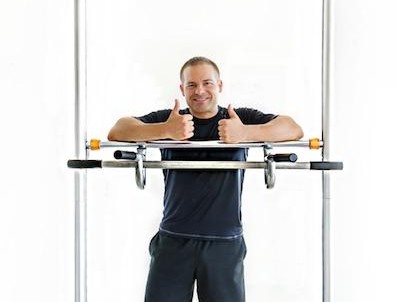
Welcome! Take this opportunity now to SIGN UP FOR MORE!
You can join over 50,000 subscribers worldwide and 1000s of customers who are taking control of their fitness and getting more from their workouts with SoloStrength® training systems!
